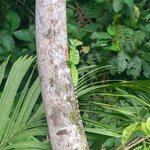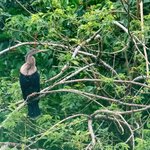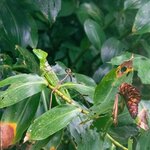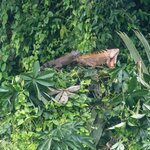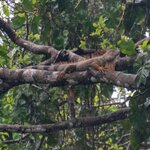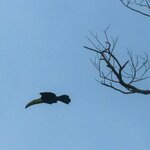Costa Rica is known for its beautiful beaches, which, at night, allow the opportunity to experience turtle nesting and hatching. The beaches are home to both green and leatherback turtles; however, which species you'll see depends on the specific location and time of year (somewhere between August and March), whether the turtles are laying eggs or hatching, and how many might make their way up or down the shore.
Discover kimkim's recommended turtle nesting tours in Guanacaste and Tortuguero, plus what you need to know before you go.
Nighttime Pacific Green Turtle Nesting Experience

We recommend the Nighttime Pacific Green Turtle Nesting Experience, a tour perfect for any traveler: solo travelers, families, groups, and couples. Tours include a professional naturalist guide, flashlights, water, and transportation to Playa Minas or Playa Real. You'll enjoy a short yet slightly steep (nothing too challenging) 10-minute walk down to the beach.
As you make your way to the beach, your guide will explain the nesting process and a bit about the green turtles. Then, you'll walk along the sand while your guide looks for an excellent spot to watch the nesting in action. You can expect to see anywhere from 10 to 30 turtles depending on the night. Observing turtle nesting requires quiet and darkness, as any loud noises or light will disrupt the turtles and cause them to retreat to the ocean.
But your patience and whispers will surely be rewarded! The green turtle can lay anywhere from 60 to 100 eggs in one night by digging a hole, laying eggs, and covering the hole to protect it from predators. Then, the turtles head back to the ocean, and in about 60 days, the eggs will hatch.
Quick Facts:
- Departure time between 5:00 p.m. and 6:00 p.m. (depending on the turtles)
- Tour typically lasts about 2.5 to 3 hours (depending on the turtles)
- Included: transportation to and from the beach, flashlights, water, naturalist guide
- Group and private tours are available
- Okay for families, but it can be a long wait to spot the turtles
- Recommended for children ages eight and up (minimum age is four years old)
- The minimum number of participants is three
- No cameras allowed
- Reservations required
Let kimkim help organize your Pacific green turtle nesting experience in Guanacaste.
Leatherback Turtle Nesting Experience

The other tour observes the green turtle, but you'll watch the leatherback turtle nest on this excursion. The action happens in Las Baulas National Marine Park at Playa Grande, a large stretch of sand just north of Tamarindo. Here is where leatherback turtles have nested for thousands of years. They are the largest marine turtles globally, weighing up to 2,000 pounds and growing up to eight feet long. They're also one of the most endangered marine animals, so watching them nest is genuinely a unique experience.
Upon arrival, your expert naturalist guide will lead you to the beach, careful not to disturb the turtles. As you watch them climb ashore to lay their eggs, your guide will explain the nesting process and share information about the species, including their challenges to survive.
Keep in mind that leatherback turtles typically nest at Playa Grande only five days a month between October and March. These days depend on the tides and, interestingly, the phase of the moon (your guide will divulge more info about that). Although there is some predictability, the turtles decide when to come ashore. Your kimkim specialist will notify you if the date needs adjustment, so it's best to have some flexibility in your schedule.
Quick Facts:
- Tours typically last four hours (depending on the turtles)
- Included: transportation, bilingual guide
- Early morning or late afternoon tour available
- Reservations are required (24 hours in advance)
Let kimkim help organize your leatherback turtle nesting experience in Tamarindo.
Chat with a local specialist who can help organize your trip.
Turtle Nesting & Hatching in Tortuguero National Park

Unlike many national parks in Costa Rica, Tortuguero National Park is unique in that it almost exclusively revolves around the water. And the best experience in the park is watching the sea turtles hatch or nest along the 22-mile (35-km) expanse of beach. Various turtles use this area for nesting and hatching, including hawksbill, leatherback, and green sea turtles, in particular.
These species nest in Tortuguero (mostly at night) from March or July through October. You can watch the mother turtles lay their eggs or observe babies hatch and wiggle their way to the surf. Of course, the hatching season depends on the species, but there are opportunities to view baby turtles on any trip, as the hawksbill species hatches throughout the year.
The accommodations in Tortuguero organize the nesting and hatching tours. You'll find many boutique hotels in Tortuguero that line the shores of the lagoon, and you'll receive all the details you'll need regarding logistics (like when the tour operates, what to bring, where you'll go, etc.) when you arrive at your lodgings. If you're particularly excited about seeing the turtles and want to secure the details ahead of time, just let your kimkim specialist know, and they can help make arrangements with your lodge.
Quick Facts:
- Tours typically depart at night
- Tours last about three hours
- Transportation and guide included
- Reservations required
Let kimkim organize your turtle nesting or hatching experience in Tortuguero National Park.
Additional Considerations
When to go. The nesting season in Guanacaste generally runs from August to March, but specific species and locations can have tighter ranges. For example, if you'd like to see the leatherback turtles at Playa Grande, plan your trip for October to March. Keep in mind that nature is always unpredictable, so although you'll likely see several turtles nesting, your tour might need to adjust the date, or you may only catch a glimpse of one or two turtles.
As for Tortuguero, the typical nesting tour season runs from about June to October. If you want to see both nesting and hatching, plan for a trip sometime between August and September.
What to wear and bring. We recommend wearing close-toed shoes for this excursion, plus layers, as it can get windy and cold after sunset. Dark clothes are best, as they don't scare the turtles, which need quiet and darkness to feel safe enough to lay their eggs. Some tours require dark clothing. We also recommend bringing a blanket or beach towel to sit on, as sometimes you must wait 30-40 minutes for the turtles to be ready to lay their eggs.

